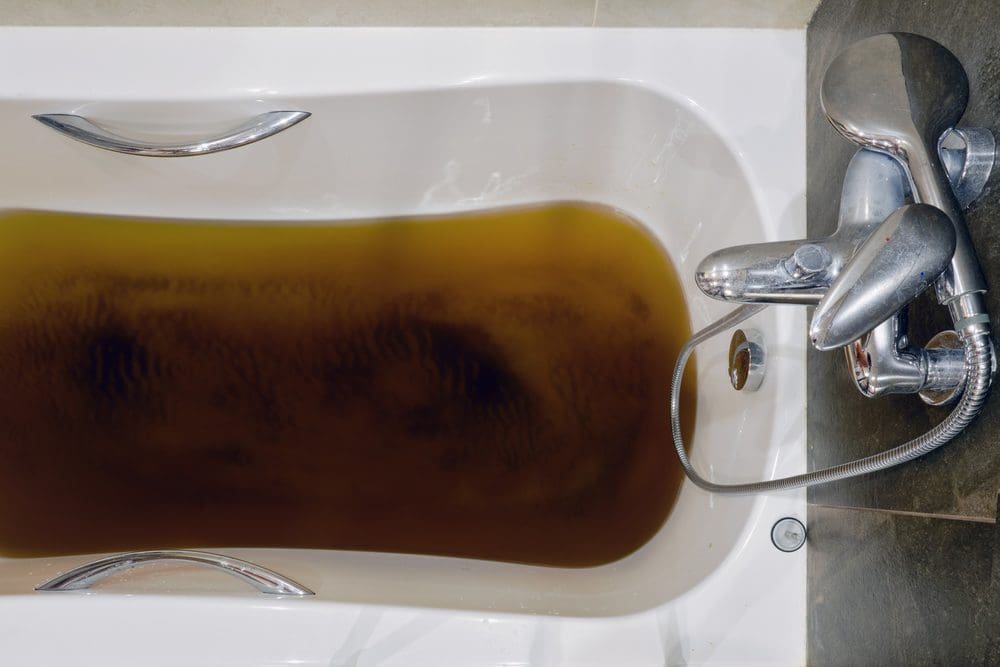Exploring the Phenomenon of Effluent Rising Through the Bathtub
Exploring the Phenomenon of Effluent Rising Through the Bathtub
Blog Article
Just how do you feel with regards to What to Do if Sewage Starts Coming Up Through Your Bathtub?

Sewage back-up in the tub can be an upsetting and unhygienic issue for any property owner. Not only is it troublesome, yet it likewise postures significant health threats and shows underlying problems with the plumbing system. Understanding why sewer is coming up through the tub is essential for taking appropriate action to deal with the issue successfully.
Intro to the Concern
Understanding the Issue
When sewage starts backing up into the bathtub, it's a clear sign of a trouble with the drain system. The wastewater that should be moving away from your home is instead discovering its way back into your home, which can cause significant damage and carcinogen.
Potential Causes
A number of variables can add to sewage backup in the bath tub. From obstructions in the sewer line to problems with the plumbing infrastructure, determining the source is essential for locating a remedy.
Typical Reasons for Sewage Back-up
Blockages in the Drain Line
Among one of the most common reasons for sewage backup is a blockage in the sewer line. This can happen because of the buildup of particles, oil, or international objects in the pipelines, preventing appropriate flow and causing sewer to support into your tub.
Tree Origin Breach
Tree origins looking for wetness and nutrients can penetrate sewage system lines through small cracks or joints. In time, these origins can grow and broaden, creating considerable damage to the pipelines and resulting in sewer back-up problems.
Aging Facilities
Older homes may have dated plumbing systems that are extra prone to deterioration, cracks, and wear and tear. As pipelines age, they become more prone to leakages and clogs, boosting the chance of sewage back-up events.
Heavy Rainfall or Flooding
Throughout periods of heavy rainfall or flooding, the drain system may come to be overloaded with excess water, causing backups and overflows. This can result in sewage backing up right into bathtubs and other components inside the home.
Wellness Risks Related To Sewage Backup
Contamination of Supply Of Water
Sewer back-up can contaminate the water system in your house, positioning a significant wellness danger to you and your family members. Exposure to polluted water can cause intestinal problems, skin infections, and other ailments.
Spread of Condition
Sewer contains damaging germs, viruses, and bloodsuckers that can cause a variety of illness, consisting of hepatitis, cholera, and gastroenteritis. Entering contact with sewer or contaminated surface areas puts you in danger of infection.
Mold Growth
Moisture from sewer back-up can create suitable problems for mold growth in your house. Mold and mildew spores can aggravate respiratory troubles and trigger allergic reactions in sensitive people, making prompt clean-up necessary.
Indicators of Sewage Backup
Foul Odors
Undesirable odors rising from drains pipes or components, specifically in the shower room, might indicate sewage back-up concerns. These smells are often solid and persistent, signaling a problem that needs instant interest.
Slow Draining Fixtures
Bath tubs, sinks, and commodes that drain pipes slowly or otherwise whatsoever could be experiencing sewage back-up. If multiple fixtures are affected at the same time, it's likely that the concern originates from a typical factor, such as the primary sewer line.
Gurgling Sounds
Weird gurgling or bubbling sounds originating from drains when water is running in other places in your home are a measure of air caught in the plumbing system. This air build-up can arise from sewage backup and need to be examined immediately.
Immediate Actions to Take
Switching Off Water Supply
In the event of sewage back-up, it's vital to shut off the water to prevent more contamination and damage. Find the primary water shutoff valve in your house and closed it off up until the issue can be dealt with.
Contacting a Professional Plumber
Handling sewage back-up is not a do it yourself task. Call a qualified plumber with experience in managing sewage-related concerns to assess the scenario and perform required repair services or cleanups.
Avoiding Contact with Infected Water
Until the sewage back-up is solved, avoid contact with infected water to avoid the spread of microorganisms and virus. Put on protective gear if you should remain in the affected location and clean your hands completely afterward.
Safety nets
Regular Maintenance of Drain Lines
Set up regular evaluations and maintenance of your drain lines to recognize and attend to potential issues prior to they rise into significant problems. This can include clearing out debris, checking for tree root invasion, and repairing any damaged pipelines.
Setting Up Bayou Valves
Take into consideration setting up backwater valves in your plumbing system to prevent sewer from receding right into your home during durations of heavy rainfall or flooding. These valves automatically close when water draws back up, shielding your residential or commercial property from contamination.
Correct Disposal of Household Waste
Stay clear of flushing anything apart from toilet tissue and human waste down the commode to stop clogs and blockages in the sewage system line. Dispose of oil, oil, and various other house chemicals effectively to reduce the danger of plumbing problems.
Cleaning Up After Sewer Back-up
Disinfection Procedures
Completely sanitize and disinfect impacted areas after sewer back-up to remove harmful bacteria and stop mold and mildew growth. Usage suitable cleaning products and safety gear to guarantee safe and reliable cleanup.
Repair of Influenced Areas
Repair any kind of damage to flooring, walls, or components caused by sewage back-up. Depending on the level of the damages, you might need to change carpeting, drywall, or various other materials to restore your home to its pre-loss problem.
Why Is Water Backing Up in My Bathtub When I Flush My Toilet?
What to do about a sewer line clog
First, don’t bother with plunging. No amount of plunging will dislodge the clog in a sewer line. The clog is too far away. Plungers are for clogs in the toilet itself, not the sewer line. Plus, the most likely causes of a sewer clog are:
Tree roots Flushed toys or feminine products Grease buildup Those items don’t move easily. And in the case of tree roots, the roots need to be cut out of the pipe and the pipe will need to be repaired.
You’ll need a closet auger. A closet auger is a type of plumber’s snake with a protective cover to keep from scratching the delicate porcelain toilet. If the clog is further down, you may need to remove the toilet or use one of your cleanouts to get to the clog.
We also recommend doing a video inspection of the drain to ensure that the cause of the clog has been completely removed. Otherwise, you could have the same problem again in a few days or weeks.
https://mspplumbingheatingair.com/blog/why-is-water-backing-up-in-my-bathtub-when-i-flush-my-toilet

I am very eager about What to Do if Sewage Starts Coming Up Through Your Bathtub and I hope you enjoyed the entire blog post. Be sure to take a moment to promote this entry if you enjoyed it. Thank you for your time invested reading it.
Make An Appointment
Report this page